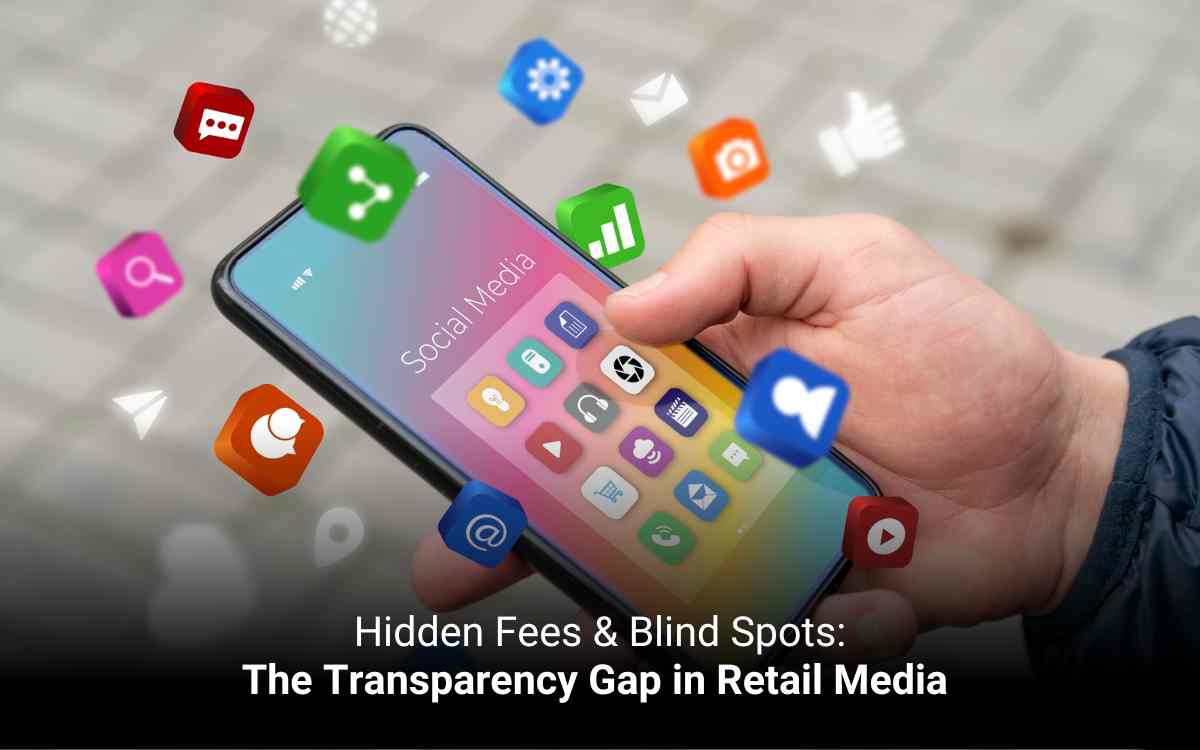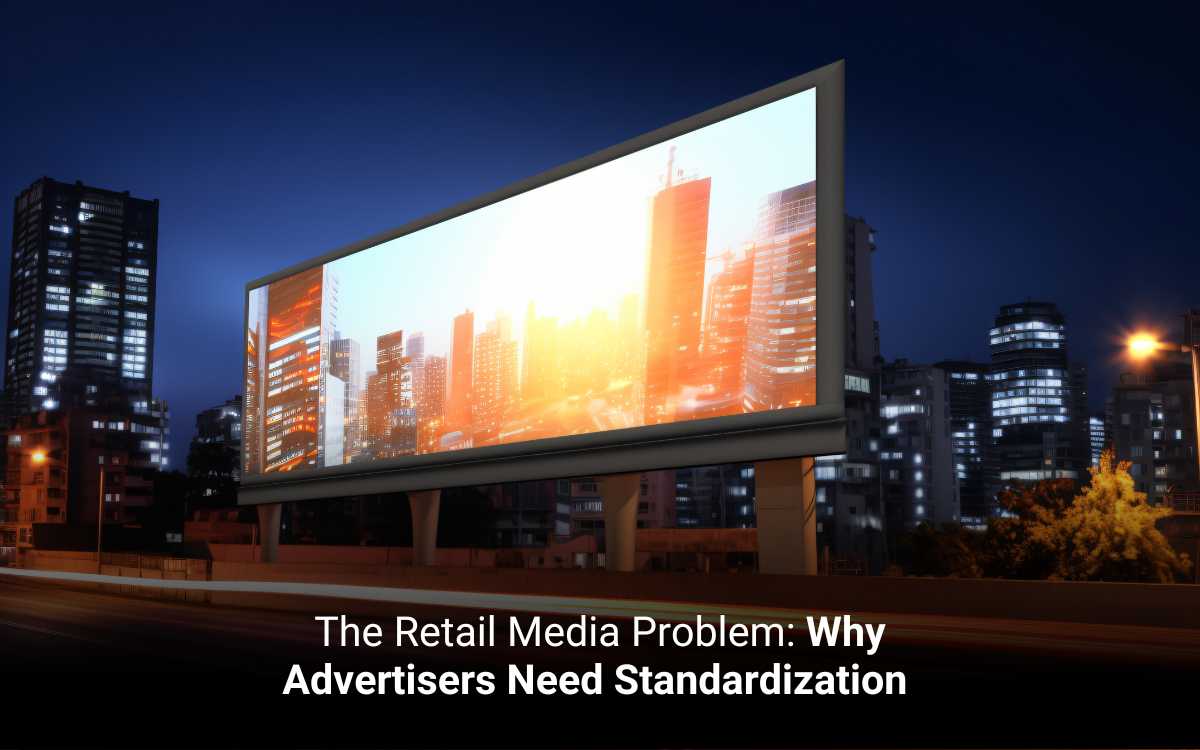A FMCG brand invests in several different retail media campaigns. Weeks later, the marketing team is still left trying to make sense of what portion of those ads actually drove sales, why performance metrics vary, and where a portion of their budget disappeared. This is increasingly a concern in retail media, where there are hidden fees and a lack of transparency creates a blind spot.
But as the retail media networks continue to dominate the ad landscape, first-party data, measurement, and proximity to the point of purchase are promised, while a gap of hidden fees, inconsistent reporting standards, and limited visibility into how ad dollars are allocated hides beneath the surface.
This article talks about the transparency gap in retail media and how it is affecting the industry.
When Should Brands Question Their Retail Media Partnerships
Here are some moments when brands need to reassess their retail media partnerships:
1. When Performance Metrics Lack Clarity
That is a problem if a retail media partner cannot explain how it tracks metrics. Many RMNs use proprietary measurements, making it difficult to compare their performance.
In such cases, an electronics brand running on different retail platforms would find that each defines “conversion” differently. And when results can’t be validated, advertising is compromised.
2. When the Reporting Feels One-Sided
Retailers often control both the ad inventory and the performance data. This raises questions regarding the partnership for brands that have no access to the raw data.
A software brand, for instance, would get only the dashboards with aggregated metrics but without the breakdown of audience segments or ad placements.
3. When Hidden Fees Start to Surface
The presence of hidden fees can quietly erode ROI. An industrial supplier investing in co-branded campaigns may discover that a large portion of their spend goes to “platform maintenance” fees rather than actual media exposure. Brands should demand clear cost calculation to ensure their budgets are funding value.
4. When the ROI Doesn’t Match the Spend
If lead quality stops improving even while ad spend is increasing, then it’s time to take a closer look at the partnership. Sometimes, the problem isn’t targeting; it’s the blind spots in the RMN’s reporting or optimization model. An unequal value exchange means it’s time to renegotiate the budgets.
5. When Transparency Is Promised but Not Delivered
No partnership based on half-visibility will sustain long-term growth. Brands should challenge networks that refuse to disclose methodology, audience overlap, or attribution logic. Retail media should not obscure decision-making.
How Hidden Fees Impact Advertisers and ROI
Understanding how these costs arise and how they impact the resulting outcomes is very important for clarity.
1. Distorted ROI Calculations
When fees are not disclosed upfront, advertisers often misinterpret performance data. A manufacturing brand might report a deceptively healthy ROAS, unknowing that hidden operational charges absorb a portion of their spend. Without advertising transparency, leaders make wrong decisions, compromising long-term ROI.
2. Budget Control is Lost
Such inconsistent billing makes it difficult for finance and marketing teams to accurately project future expenses. For instance, a logistics provider may find that the costs of their campaigns vary quarter over quarter without rhyme or reason. This lack of transparency upsets budgeting, planning accuracy, and investor confidence.
3. Blind Spots in Performance Optimization
When a retailer doesn’t disclose where or how fees are applied, advertisers lose visibility into which areas of the campaign drive performance. For instance, a technology distributor might not notice that part of its spend is directed to low-performing ad placements since fees are bundled under some general “platform cost.”
4. Loss of Trust and Partnership
Hidden fees destroy credibility and put friction on the relationship. C-suite leaders expect an open collaboration with shared accountability from retail media partnerships. Lack of transparency removes trust, and that is a formidable issue.
What Solutions Can Close the Transparency Gap?
To restore trust and ensure performance, you have to focus on solutions that will drive advertising transparency.
1. Standardized Measurement Frameworks
The lack of standard metrics is one significant cause of the transparency gap. Industrywide adoption of standard KPIs can allow for precise performance measurement. For example, an electronics brand advertising across several RMNs will be better-placed in terms of optimal spend allocation when all platforms measure conversions on the same framework.
2. Independent Auditing and Verification
Third-party audits give objectivity to retail media performance. Brands can ensure that the metrics reported indeed reflect actual outcomes through third-party verification agencies. A SaaS company may utilize independent auditors for verification of conversion data or campaign reach across different networks.
3. Transparent Data-Sharing Agreements
Retailers should allow advertisers to monitor audience and performance data in real-time. Shared dashboards and open APIs will foster transparency into exactly how their campaigns are performing, enabling the advertiser to make optimization decisions. For instance, an auto-parts manufacturer would be able to see buyer behavioral and engagement trends and adjust their efforts accordingly.
4. Collaborative Governance Models
Transparency needs a mutually understood governance framework. The brand and agency, or retailer partners, should establish shared KPIs, standards for ethical data use, and regular review meetings to ensure accountability. Partners, when working openly together, reinforce shared success metrics.
5. Technology-Led Tools
AI-powered analytics platforms are now able to find anomalies, track budget utilization, and flag unexplained costs. For instance, a logistics brand may employ AI-powered spend analytics to find billing or performance data discrepancies.
Conclusion
For advertisers, it’s time to demand answers. For retailers, it’s an opportunity to differentiate by offering transparency not just metrics. Ultimately, closing the transparency gap is about fostering honest partnerships. Clarity isn’t just a metric; it’s the new currency of competitive growth in the retail media space.



